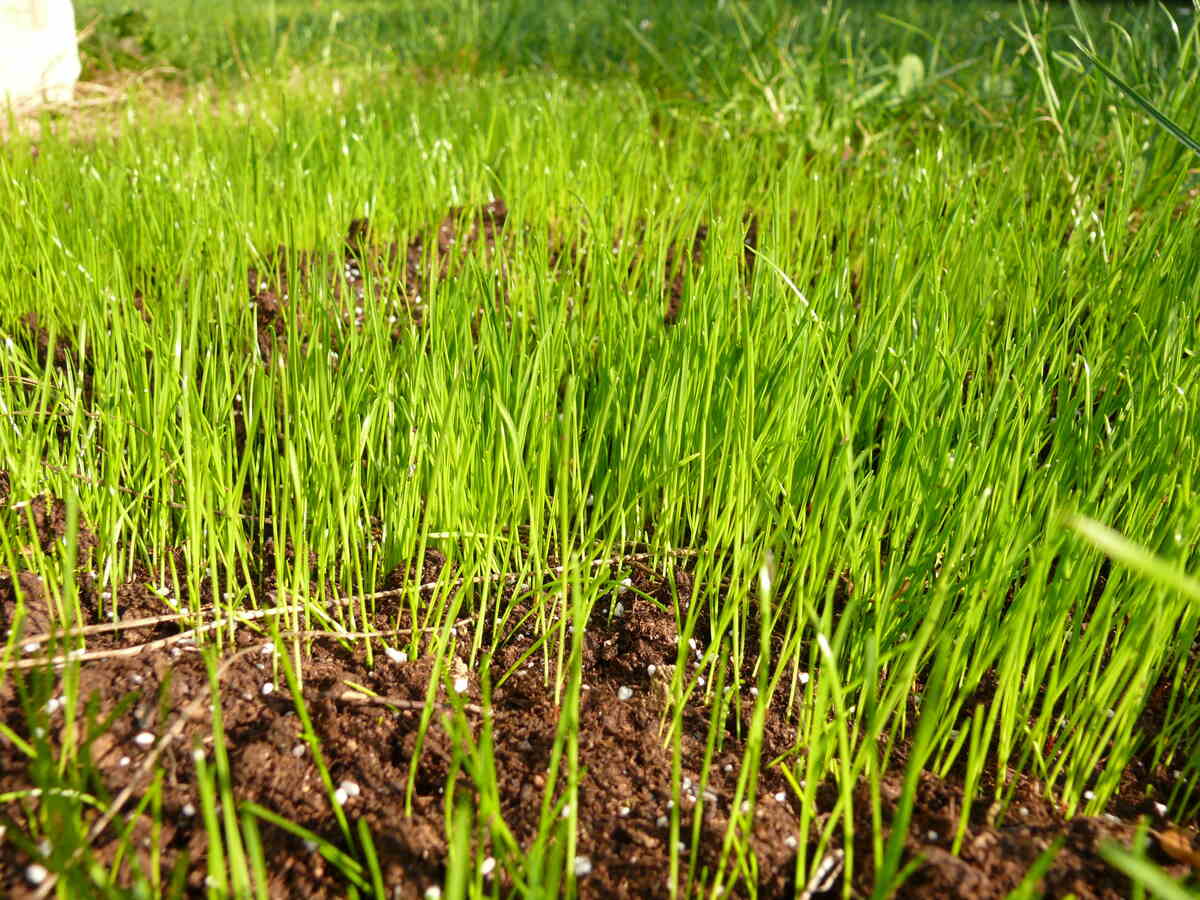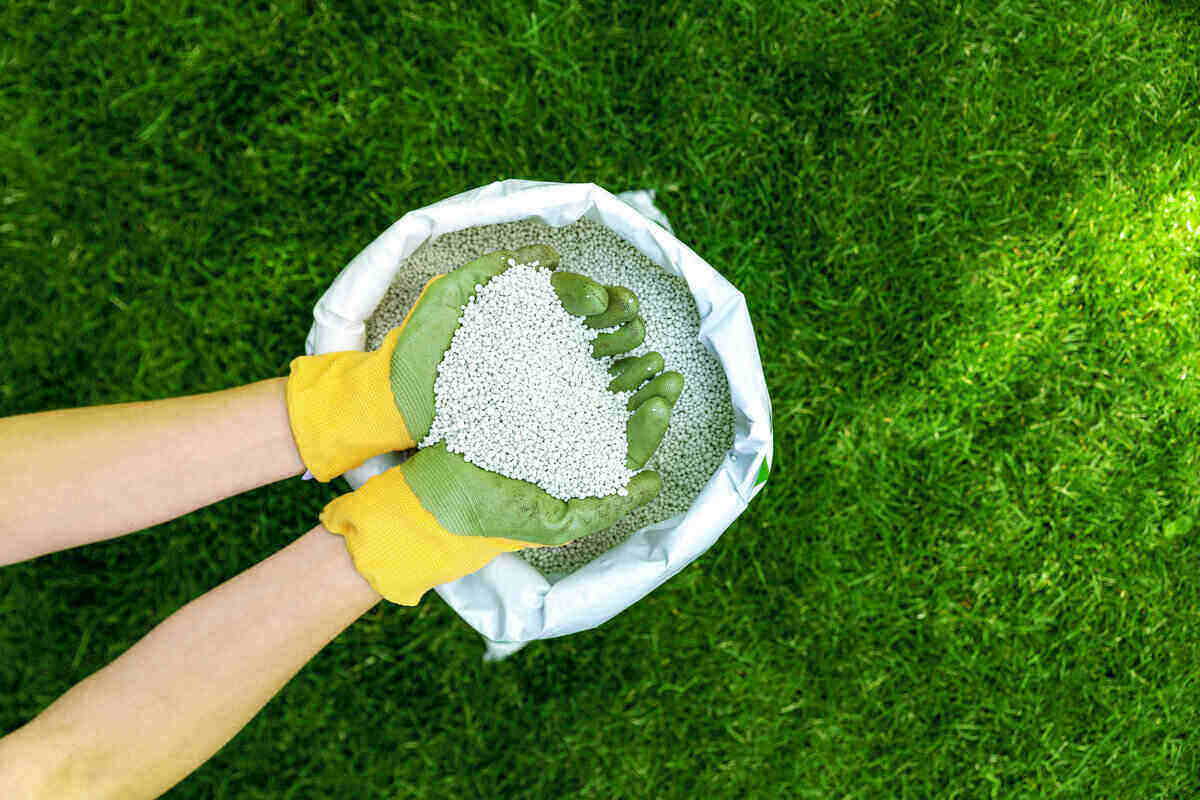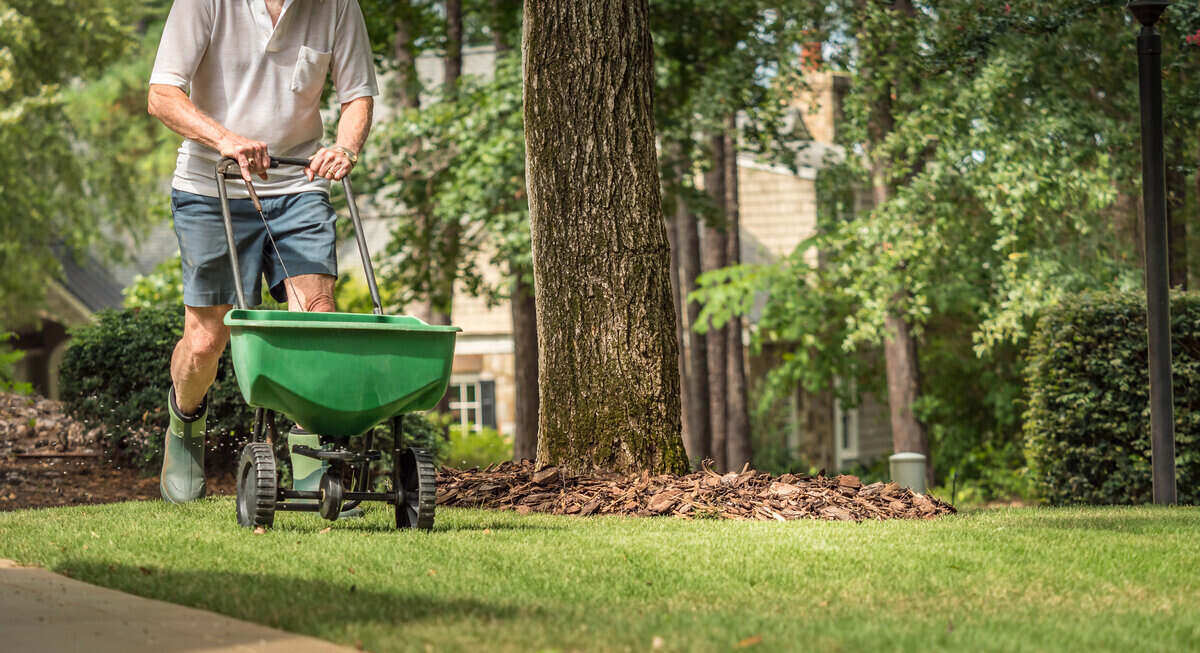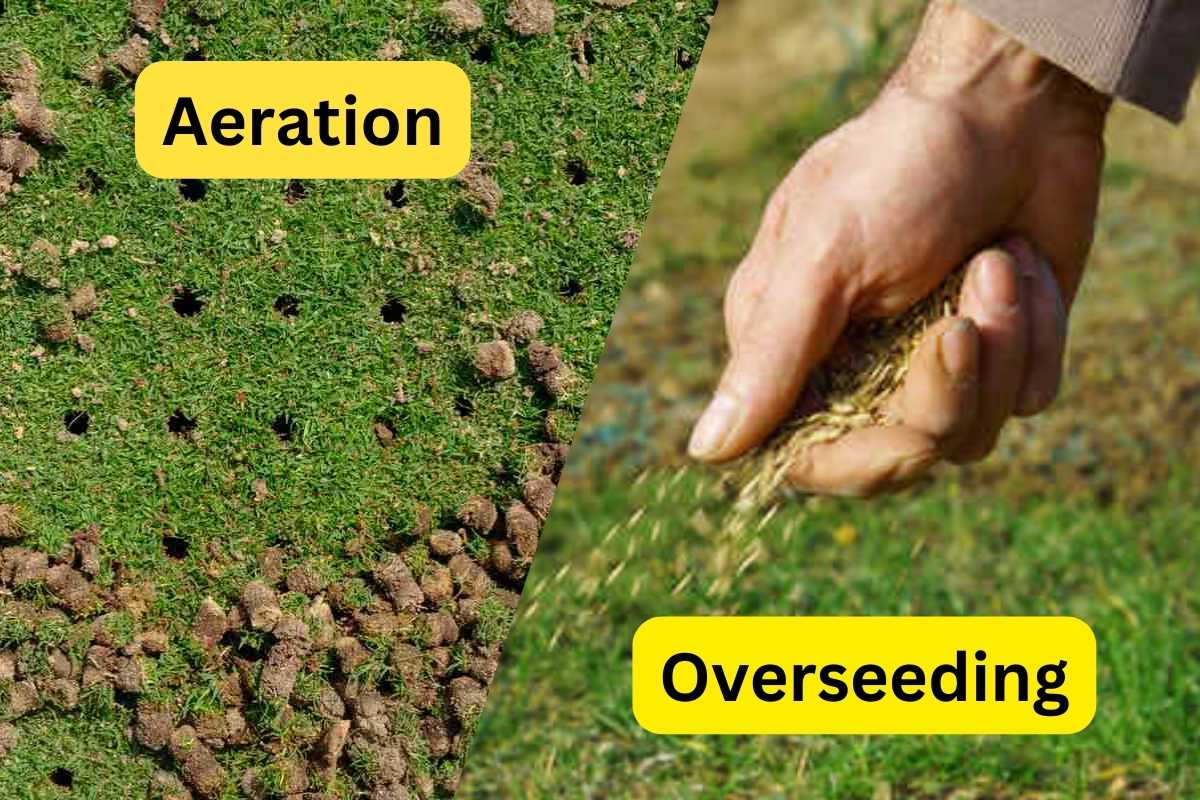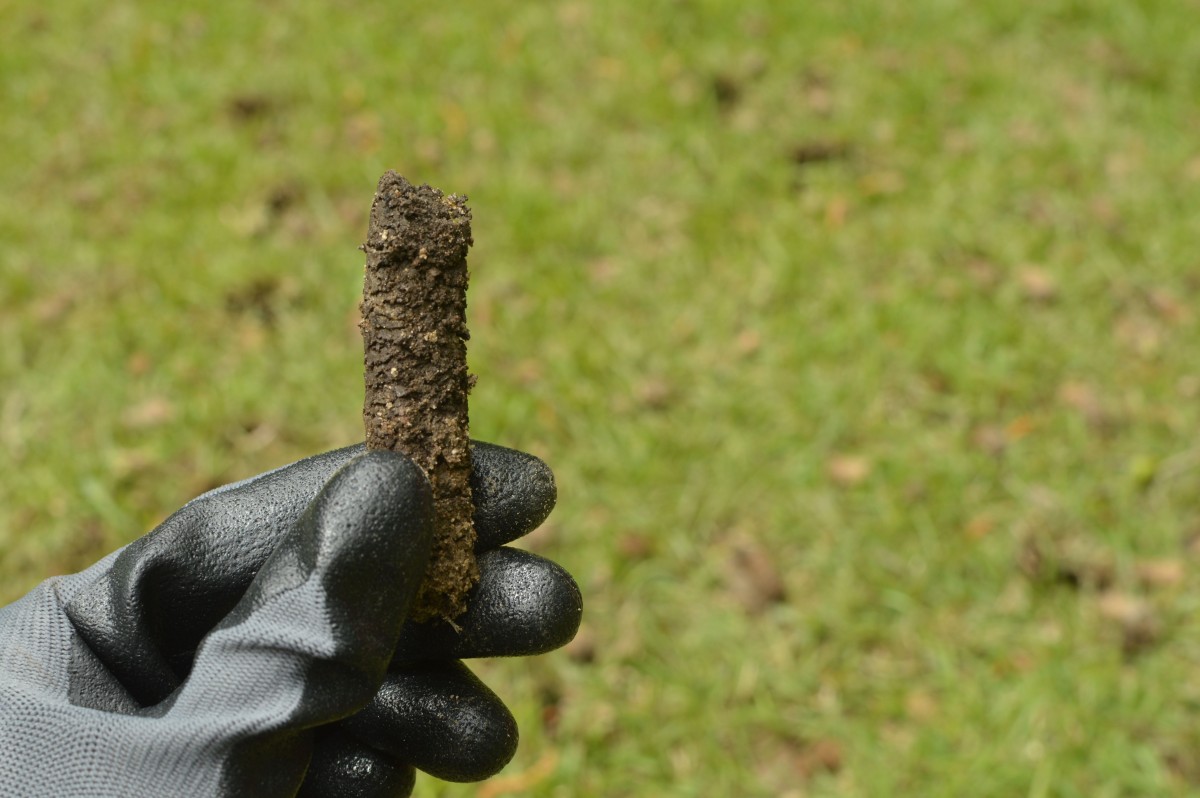
After aeration, your soil is primed for revitalization. To take full advantage of this, here’s what to do after aerating your lawn: spread new grass seed and apply fertilizer to boost the grass’s development and aesthetics.
The aeration process reinvigorates the soil, so now’s the time to replenish it with nutrients and new grass. Thorough watering, fertilizing, and overseeding will complete this aeration treatment at one hundred percent. Avoid foot traffic, and wait to mow your lawn. Skip these steps and your grass may be undernourished and fail to establish at its fullest potential. The following section will introduce the post-aeration measures for a thicker, greener grass.
What to Do After Aerating
Your lawn would benefit greatly from an aeration process, but the job is only semi-complete (here’s a video explaining aeration to refresh your memory). So what should you do first?
LawnStarter Pro Justin Stultz recommends planting the grass seed first, and then capping off the seeds with topdressing to hold the seeds in place and lock in the moisture. Water in the top dressing and seeds, followed by fertilizer and lime.
Apply water once more to wash any fertilizer off the existing grass (otherwise, your turf might burn).
Here are 10 important measures to perform post-aeration, in order:
Step 1: Leave the Soil Plugs Alone
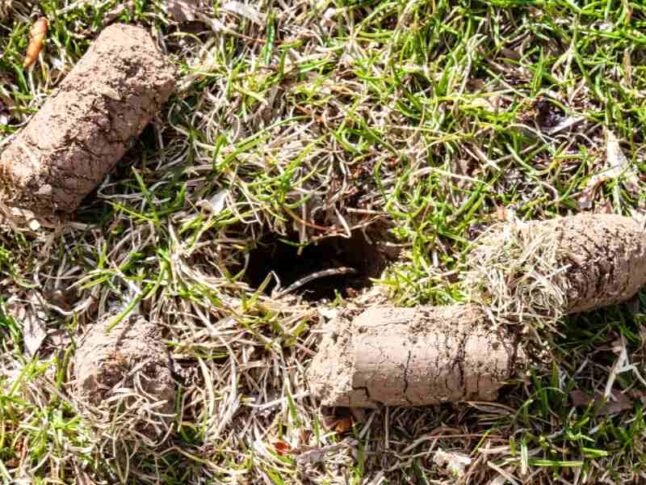
Right after using the core aeration method, you’ll notice soil plugs on the surface of your lawn. It’s best to leave them exactly where they are. Why? The soil plugs naturally break down over time and release plenty of beneficial nutrients back into the soil.
Soil plugs contain microorganisms that help decompose any layers of thatch (dead grasses and roots) present in the soil. If the sight of soil plugs bothers you, we recommend composting them for later use, such as when the soil is lacking nutrients.
Step 2: Overseed Your Lawn
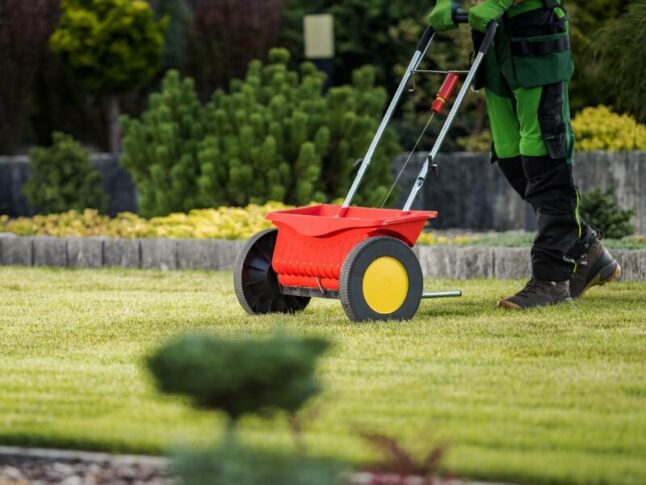
After aeration, your lawn is primed for optimal growth. It’s the perfect opportunity to overseed your lawn. This is a process in which you apply new grass seed to fill in the bare patches of lawn with new growth. Overseeding increases the lawn’s overall density, leaving your neighbors wondering what your big secret is. It is important to choose the right seed combination that fits your current grass type.
For cool-season grasses, the best time to aerate and overseed is early fall, which is when the soil temperature typically ranges from 50 to 65 degrees Fahrenheit. To get the best out of these grass types, here’s a guide to growing cool-season grasses.
As for warm-season grasses, aerating and overseeding is best in late spring through early summer when the soil temperature is above 70 degrees Fahrenheit. If you live in any of the southern states, here’s a guide to growing warm-season grasses.
Step 3: Topdress Your Lawn
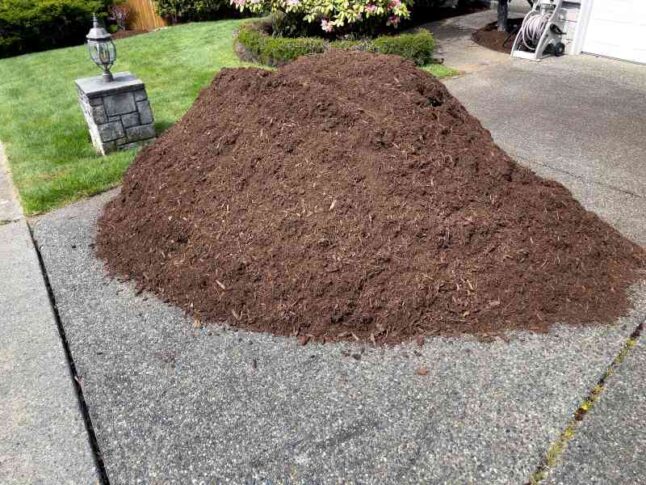
Topdressing is the process of spreading a thin layer of material, such as topsoil or compost, over the existing grass. Topdressing offers several advantages:
- Adds organic matter to the topsoil
- Improves the soil structure
- Reduces thatch
- Builds up beneficial soil microbes
- Smooths out uneven terrain
- Reduces the need for fertilizing
- Protects new grass seed
To acquire knowledge on the steps, materials used, and benefits of this process, here’s an article on Topdressing a Lawn.
Step 4: Water Your Lawn
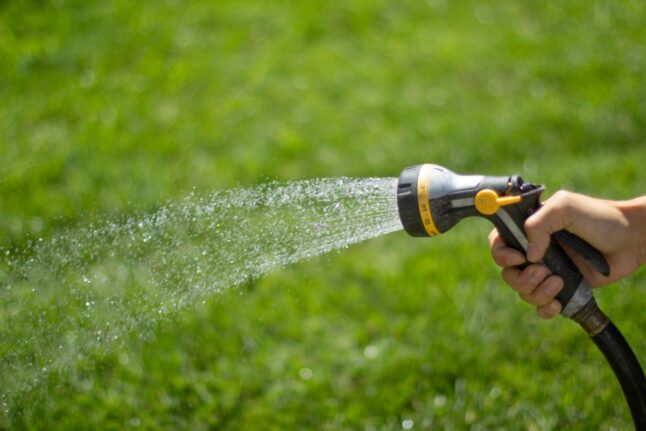
Next, it’s time to water the topdressing and seeds into the soil. We don’t need too much water here, as we’ll be adding more water again after the fertilizer and lime. Just enough to give the topdressing and seeds a good soak.
Step 5: Apply Fertilizer
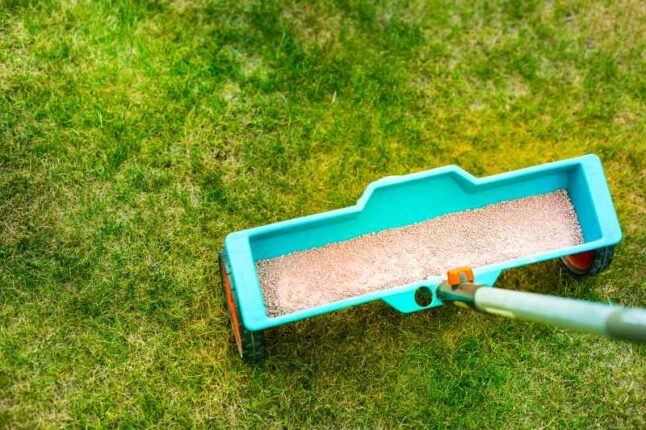
There isn’t a more perfect time to fertilize your lawn than post-aeration. The holes created in the soil allow more nutrients to reach the grass roots, and at a faster rate. As a result, the established grass will be extremely healthy and well-nourished. It’s best to apply fertilizer right after completing the aeration process, or within a few days.
We recommend purchasing a fertilizer with a balanced nitrogen, phosphorus, and potassium ratio (NPK) that’s suitable for your grass and soil type. It’s always best to test your soil before applying fertilizer. To learn more about fertilizer and soil testing, here’s an in-depth guide at How to Choose the Right Lawn Fertilizer.
Step 6: Lime Your Lawn
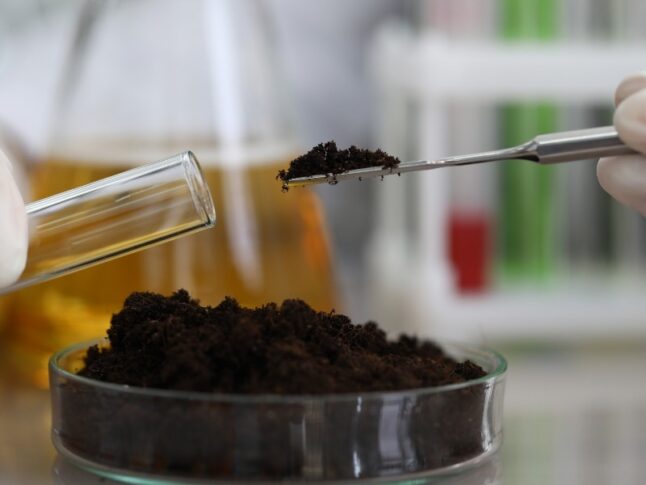
Not every lawn requires a lime treatment after aeration. Before fertilizing or liming your lawn, have your soil tested at your local agriculture facility to ensure whether your soil needs it.
Additionally, if you have warm-season grass, you’ll need to delay liming. Warm-season grasses shouldn’t be aerated in fall, and fall is the best time to apply lime. So, consider aerating your warm-season grass during its growth season (late spring and summer) and then wait to apply the lime in autumn.
As their name suggests, cool-season grasses are cool to have both aeration and liming performed in the fall.
Lime is a soil amendment that brings an acidic soil closer to a neutral pH level. It is made of ground limestone and mainly consists of calcium carbonate. Acidic soils are prone to increased weed growth, excessive thatch, reduced nutrient uptake, and other harmful effects to the lawn’s health. This is where liming comes in to reduce the acidity level and maintain the lawn’s health. Generally speaking, it is recommended once every two years.
For more on this topic, here’s a detailed article on Why, When, and How to Lime a Lawn.
Step 7: Water Your Lawn, Again
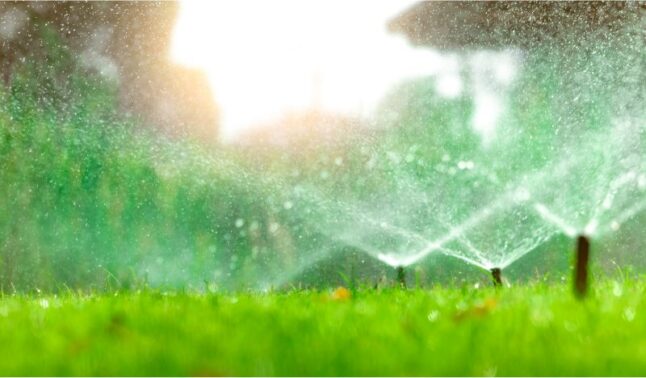
It’s finally time to quench the lawn’s thirst and water the fertilizer and lime off your grass blades (otherwise, these chemicals might burn the turf).
Just think of how satisfying a glass of cold water is after an intense cardio workout. After aeration, the soil has a similar craving for water. The newly-created holes allow water to penetrate deep enough to reach the grass roots more effectively, thus boosting the lawn’s post-aeration recovery.
Depending on the type of soil, between 1 and 3 inches of water is sufficient to keep the soil moist while the new seeds begin to germinate. We recommend daily watering until the new grass reaches the height of the established grass. Visit our comprehensive guide to learn more about how often to water grass seed.
Note: Make sure not to overwater the lawn. Not only would you be wasting water, but you’d also be harming the nearby plants. Overwatering can kill valuable trees, shrubs, and perennials.
But when is the best time to water your lawn?
Generally speaking, the best time to water the lawn is between 4 and 8 in the morning. Evaporation is typically low during these hours, so the soil will absorb the most amount of water (less waste). The grass will dry quickly once the sun rises, thus lowering the risk of lawn diseases. But since the goal is to keep the soil moist after aeration, you can also water the lawn during the late afternoon, allowing the grass bladed to dry before dark.
Step 8: Limit Foot Traffic

There’s nothing quite like rolling and playing around on a dense, green, and freshly-mowed lawn. However, you may have to put that excitement on hold after aerating the lawn. Both pets and humans should steer clear of aerated parts of the lawn for at least one month. Limiting foot traffic allows the seeds to germinate properly and sprout new growth.
If you’re worried that the little ones may get forgetful, install a temporary posting signage to draw their attention to which parts to avoid. You can also put up a temporary fence that stops pets from running over the aerated area.
Step 9: Manually Remove Weeds (Avoid Herbicides)
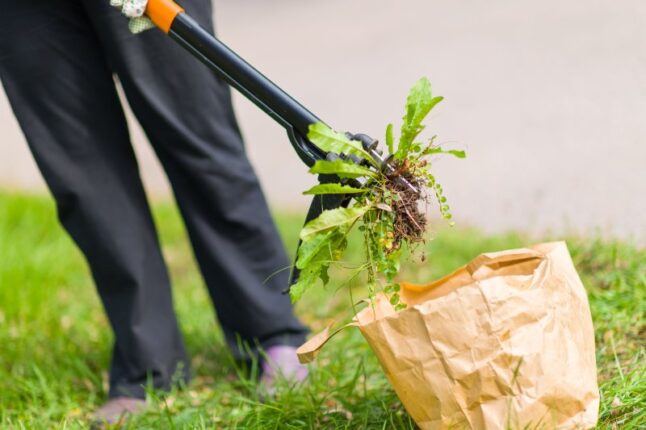
After aerating your lawn, be sure to check for common lawn weeds at least once a week. Aeration creates holes in the soil that weeds take full advantage of to germinate faster.
If you’ve overseeded, counter weed growth with the old-school method of hand-pulling. Applying herbicides too soon could kill your germinating grass seed. The following Guide to Weed Control in Your Yard will help you maintain healthy grass that’s free of unwanted plants.
Step 10: Wait to Mow Your Lawn
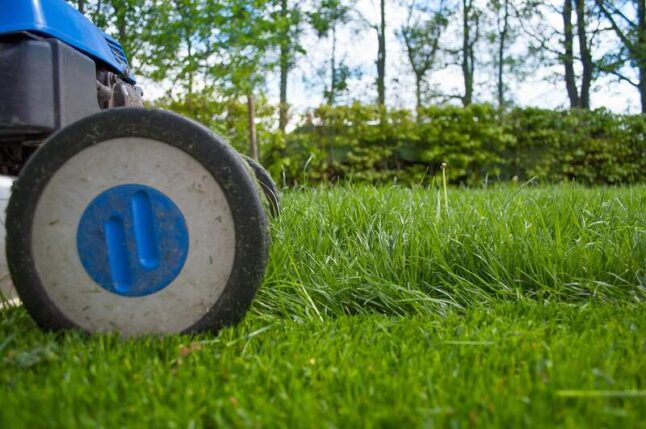
After aerating, overseeding, and topdressing the lawn, be sure to wait until the new grass reaches the same height as the established grass. After this, you can resume your typical mowing schedule. Talent needs to be met with regular practice, so browse through these lawn mowing tips to raise your game.
Pro tip: Apply different mowing patterns each time you mow to avoid soil compaction and encourage healthy grass growth.
Different grass types require different mowing heights and rates. The following table lists the most popular grass types and their mowing requirements:
| Grass Type | Mowing Height (inches) | Mowing Rate (times per week) |
| St. Augustine | 3.5 to 4 | 1 to 2 |
| Kentucky Bluegrass | 2.5 to 3.5 | 1 |
| Fine Fescue | 2.5 to 4 | 1 to 2 |
| Bermuda | 1.5 to 2.5 | 1 to 2 |
| Perennial Ryegrass | 1.5 to 2.5 | 1 |
| Tall Fescue | 2 to 3 | 1 to 2 |
| Zoysia | 1 to 2 | 1 to 2 |
If you’re too busy to keep up with the mowing rates after aeration, you can always hire a professional lawn care service to do it for you. If this sounds like a brilliant idea, here’s how much lawn mowing costs in 2024.
When Is the Best Time to Aerate Your Lawn?
The best time for aeration depends on the type of grass established on your lawn. Generally speaking, aerating the lawn during the grass’s growing season gets you the best results. The grass will be highly active during that period, so it’s able to recover quickly from the aeration process.
As mentioned in a previous section, grasses are split between two categories: cool-season and warm-season. So what does this signify? Each grass category thrives during different seasons, so the best time to aerate the lawn would vary according to the grass type.
- Cool-season grasses: The best time to aerate lawns with cool-season grasses, such as Kentucky bluegrass, is early fall. Performing this process in early fall helps in reducing soil compaction and promoting root development before the grass enters winter dormancy.
- Warm-season grasses: For lawns with warm-season grasses, such as zoysia, the best time to aerate is late spring through early summer. This is when warm-season grasses commence their growing season, so they’ll have time to recover from aeration before the hottest months arrive. Lawn aeration in late spring also helps reduce soil compaction that might have occurred during winter.
How to Aerate Your Lawn
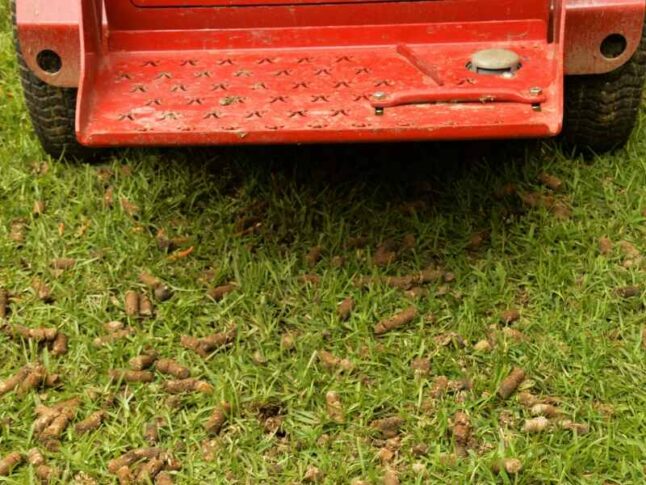
Aerating a lawn is a time-consuming yet easy process to perform. The goal is to create holes in the soil that allow more oxygen, water, and nutrients to penetrate it. This allows the grass to flourish and be greener than ever before.
To prepare for the aeration process, you’ll need to:
- Choose an aerator tool
- Mow the grass to a shorter height to get a deeper penetration with the aerator tool
- Water the lawn with 1 inch of water one or two days before aerating to soften the soil
- Flag the sprinkler heads to avoid damaging them
- Aerate the entire lawn, not just a few spots
- Leave the soil plugs on the yard surface after using a core aerator (a section explaining this aeration type is included in the article linked below).
- Overseed the lawn to upgrade the grass’s health and appearance
Here’s an article on How to Aerate a Lawn to explore each of the 7 steps in greater detail. You will also find a section explaining the core aeration method, and how it differs from spike aeration.
Benefits of Aerating Your Lawn
We’ve covered what comes after aerating your lawn, but let’s go back a few steps and highlight the significant benefits of core aeration:
- Boosts root growth: Compact soil hinders the growth of roots. Aeration loosens up the soil and allows more nutrients to reach the roots, enhancing their growth rate.
- Supplements the soil: Aeration allows more water, nutrients, and oxygen to reach the soil. As a result, the grass will look greener and healthier than ever.
- Reduces thatch buildup: Thatch buildup is the accumulation of dead roots, dry grasses, and other organic matter. Too much of it can prevent the soil’s uptake of water and nutrients. Aeration penetrates thatch buildup and keeps it from becoming a serious issue. To learn more about controlling thatch buildup, here’s a guide on When and How to Dethatch Your Lawn.
- Improves water drainage: Water drainage issues are caused when compact soil keeps water from reaching the lower levels of the soil. The holes created by aeration help quash such issues.
- Prevents lawn disease: Aeration improves water drainage, which keeps moisture-loving fungus from thriving. Allowing the soil to breathe and maintain proper moisture levels keeps lawn diseases from ruining your property’s aesthetics.
FAQ About Aerating Your Lawn
Will an aerated lawn be affected by rainfall?
Little to moderate rainfall after aeration won’t be a major problem. It’s actually a good thing since it naturally keeps the soil moist, which is very important post-aeration. However, severe rainfall for long periods after aeration may cause excessive flooding, which is damaging.
If heavy rainfall occurs before your scheduled aeration process, it’s best to wait a few days for the soil to lose some of that extra moisture.
How often should you aerate your lawn?
It depends on the type of grass that’s established on your lawn, the soil type, and its level of compaction. Aeration isn’t a monthly necessity, so performing this process at least once every two years should maintain a lush, green turf. To learn more about the factors affecting aeration frequency, check out When and How Often Should You Aerate Your Lawn?
Is there more than one method to aerating your lawn?
Yes, there are two. Core aeration is the process in which 2- to 3-inch soil plugs are removed to create gaps in the soil. Spike aeration is the process of creating holes in the soil, without physically removing soil plugs from the ground. Generally speaking, core aeration is the preferred method that yields the best results.
How much does lawn aeration cost?
For a medium-sized lawn, expect to spend between $78 and $238 for a professional aeration. For homes with a huge lawn space, professional aeration may cost as much as $636. For more details on the cost breakdown, here’s a pricing guide on How Much Lawn Aeration Costs in 2024.
Don’t Get Your Hands Dirty. Hire a Lawn Care Pro
Aeration allows more nutrients, water, and oxygen to penetrate the soil. This process increases the rate of grass seed germination and improves your lawn’s aesthetic appearance. It’s a relatively easy process that isn’t needed on a regular basis. Aeration also contributes to the health of the surrounding plants, preventing water drainage and lawn diseases from killing your native trees or perennials.
Apart from aeration, the grass requires regular mowing and watering. If you can’t keep track of all your lawn’s needs, hire a local lawn care professional to handle the lawn care for you.
Main Photo Credit: Sherry Barr Photography / Canva Pro / License

